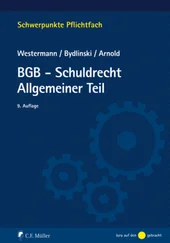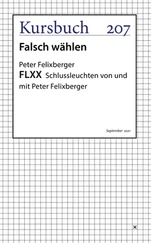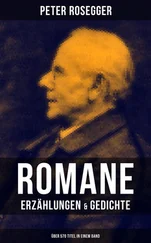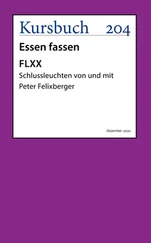Using Elizabeth’s samples from the fissure, a team of scientists at the University of Illinois at Champaign-Urbana were already working on the radiocarbon analysis. The results weren’t expected for another five hours.
Elizabeth unrolled a sleeping bag in one of the equipment rooms in the library annex. A long worktable was piled with spare parts for seismographs—starters, timing circuits, pendulums. The room was poorly heated but had the luxury of privacy. The men slept between the stacks on the floor of the library, grabbing a few hours whenever they could. Elizabeth rated her own space.
She’d just slipped into her sleeping bag when someone rapped lightly on the door. It was John Atkins. He’d scrounged a cup of milk, which he’d heated on a butane stove.
“This might help you sleep,” he said. “It works with me—especially when I mix in a good shot of bourbon. Unfortunately, we’re fresh out of bourbon.” He grinned. “You’d think something like that would be illegal in Tennessee.”
Elizabeth took a few sips, holding the warm cup with both hands. “That’s nice,” she said, smiling. “Sit with me for a few minutes. I’d like the company.”
Atkins sat next to her, his back against the wall. She curled into the crook of his arm. She felt sleep coming.
“Thank you for today,” she said, looking up at him.
He kissed her, gently. Then she put her hand against the side of his face, and they embraced.
“Hold me,” she said.
“Go to sleep,” he said softly. All the old emotions were rushing back, the wonderful sensation of just being close to a woman. And he did care for Elizabeth Holleran. He’d known that since their wild trip across the Mississippi. She was cool under pressure, caring, and incredibly bright. She’d shown nothing but courage and conviction since she’d arrived in Memphis.
There was something else, too. He loved to look at her. She was a beautiful woman.
Snuggling closer to him, she said, “I’ll be awake the next time. Promise you’ll be there when I wake up.”
He kissed her on the lips. Then she was quiet. He felt her go to sleep in his arms and must have dozed off himself, sliding down next to her on the warm sleeping bag.
He hadn’t planned on that. It happened so quickly he was asleep before he knew it. Awakened, he had no idea how long he’d been out. Elizabeth was sitting next to him. She was slowly, gently unbuttoning his shirt.
He touched her and felt her breasts against his chest. She’d already opened her shirt and slipped off her bra. He glimpsed the long, wonderful legs as she straddled him. He twisted slightly so that he could unbuckle his trousers. Elizabeth pulled the sleeping bag over them and lay on top of him, touching him ever lower with her hands as they embraced.
He started to say something, to tell her that he loved her. There was so much to say, and he was still groggy with sleep. He hadn’t said enough the last time he loved someone. This was a second chance. A gift. He wanted Elizabeth to know how much he cared for her.
“I love you,” he said.
She touched his lips. “Keep saying that. I won’t ever get tired of hearing it.”
He kissed her deeply, clasping his hands around her waist, afraid even then of losing her. He’d take her as far as she wanted. As far as she’d let him.
WASHINGTON, D.C.
JANUARY 17
7:00 P.M.
PRESIDENT ROSS HAD CALLED THE EVENING meeting in the national security adviser’s conference room in the basement of the White House’s West Wing. He’d flown in a handful of scientists from the Memphis earthquake center and the USGS. They’d taken an Army helicopter to Fort Campbell, Kentucky, where Air Force One picked them up for the one-hour flight to Dulles.
Ross had deliberately kept the group small. In addition to the seismologists, he’d limited attendance to Margaret Greenland, his national security adviser; the speaker of the House and Senate majority leader; and his science adviser, Steve Draper.
The president had already been warned that the news was bad, but he hadn’t realized its true gravity until Elizabeth Holleran began to speak. As she described the carbon-14 dating tests and their implications, he struggled to keep his composure.
In a concise, factual delivery, Holleran laid out the key point: the radiocarbon dating of fossil chips she’d scraped from the walls of the deep trench showed unmistakable evidence that massive earthquakes had ruptured the fault no less than six times during the last fifteen hundred years. The horizontal layers of clay, sand, silt, and gravel were riddled with the trace marks of those disturbances. The sequence was striking. The shortest period between quakes was roughly two hundred years. Most occurred at intervals of anywhere from five hundred to eight hundred years.
The zone had been incredibly active over the centuries. The vertical displacements varied from several inches to as much as forty feet.
“They’re textbook examples of severe faulting,” Holleran said. She showed a blowup of a photograph she’d taken about a hundred feet down into the fissure.
Even to the president’s untrained eye, the thick scarring and darkening of the soil stood out clearly.
Using a pointer, Holleran outlined the telltale signs of repeated faulting. The small room was stuffy and crowded, but no one moved or fidgeted. They were all listening intently, jotting down notes.
“The quake that left those footprints dates from just after the time of Columbus’ voyage of discovery,” she said.
The jagged crack in the exposed soil was striking. But the most distinctive aspect was the clear indication that the fault had repeatedly produced great earthquakes. The evidence appeared in each of the different strata, which were separated by bands of lighter-colored soil.
“I take it this wasn’t caused by just one earthquake,” Ross said.
Here it comes, Atkins thought.
“As best we can tell, there were at least four major earthquakes,” Holleran said, outlining their tracings. “They were probably concentrated over a very short span of time.”
“How short?” Ross asked.
“That’s difficult to say,” Holleran said.
“Give me a range.”
“At the longest end, months.”
“And at the shortest?”
Holleran’s reply was quietly stated: “Weeks.”
With a possible error of no more than thirty years, the carbon-14 tests had shown major earthquakes around A.D. 200 then again in 631, about the time of Mohammed. Mega quakes had also occurred when the ancestors of the American Indian were migrating to North America in the 1100s and, again, during the Black Death that depopulated much of Europe in the 1650s.
The sedimentary patterns Holleran had found in the deep fissure indicated that the big quakes often came in groups of three, but at least one sequence had four, possibly five major earthquakes. The best evidence of a huge earthquake was a sharp, twenty-five-foot offset that dated roughly to the mid-1600s.
Only an extraordinary quake could have done that. Atkins thought. The growing body of data increasingly indicated that the American heartland was prime earthquake country to a degree no one had ever imagined before. And much of the credit for nailing this definitively had to go to Holleran. He had no doubt, none, that she was right in her analysis. It was highly likely they were going to get rocked again.
“So we could be looking at maybe two or three more major quakes?” Ross asked. Casually dressed in jeans and a blue pullover, he was taking notes on a yellow legal pad.
“It’s possible. Mister President,” Holleran said. “If the fault follows the usual pattern.”
“How possible?” Ross persisted.
Holleran said, “I can’t give a percentage. I’d say at least one more big quake in the magnitude 8 range is likely.”
Читать дальше












